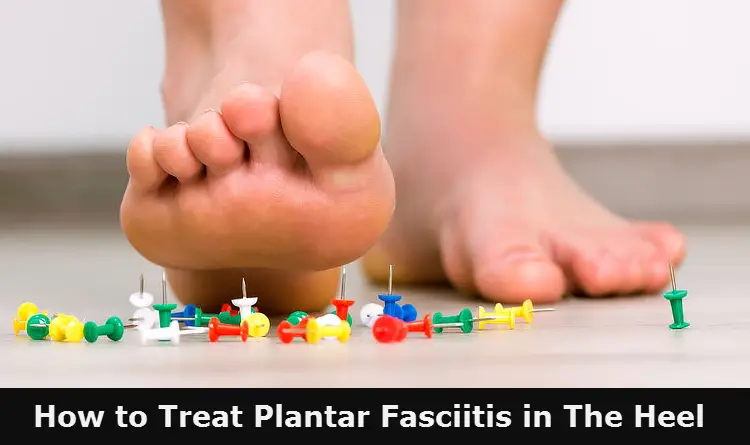How to Treat Plantar Fasciitis in The Heel?
The correct course of heel pain treatment will be dependent on the underlying cause of the heel pain. Heel pain should get a thorough diagnosis by a health professional before any new treatment regimen is started. However, the most common causes of heel pain are plantar fasciitis and heel spur pain, for which heel pain treatment is the same. The most commonly used and most effective treatment devices are heel seats, gel seats, heel supports and orthotic insoles.
All of these services to support the foot more thoroughly with heel inserts and supports raising the heel, one of the most important of the RICE treatments. They can instantly relieve these painful foot conditions, and help to cure the problem at its root causes, making them a highly effective heel pain treatment.
Contents
RICE
An acronym standing for Rest, Ice, Compression and Elevation, is commonly recommended by physicians. Applying an ice pack and holding firm against the sole of the foot is effective at keeping inflammation to a minimum and will help to prevent the condition from becoming too severe. This should be performed as early as possible following the onset of the injury. Following this, plantar fasciitis exercises are beneficial, as is raising the heel and supporting the arches of the feet to limit pain when walking. If the problem is not treated, the change in walking gait can lead the conditions to start affecting both feet, making walking all but impossible.
Common heel spur and plantar fasciitis treatments
- Cold Therapy – Ice pack and compression
- Rest
- Plantar fasciitis exercises
- Anti-inflammatory medication
- Shoe inserts, heel seats, gel seats
- Arch supports
- Orthotic Insoles
- Night Splints
- Healthy footwear such as plantar fasciitis shoes
- Get seats, heel seats, and orthotic inserts
Heel seats, heel inserts, gel seats, shoe inserts, heel cushions – the corrective devices have many names, however, they all serve to cushion the strike force and to raise the heel, helping to cushion and combat heel pain from bone spurs, plantar fasciitis, stone bruises, and flat feet. They are designed to be inserted into standard shoes, are highly comfortable to wear, offer exceptional cushioning of the heel strike, and aid walking efficiency. In many cases, they provide instant pain relief and are some of the best heel pain treatment options.
Heel Pain Relief
Orthotic inserts and insoles also feature heel supports, however, run for ½, ¾ or the full length of the foot. To fit an orthotic insole into shoes then need to be roomy, and to preferably have a removable insole or sock liner. In addition to cushioning the heel, orthotic inserts offer improved arch support and cushioning for the ball of the foot. Many people choose to use insoles for the comfort they offer, and they can also prevent many painful foot conditions from developing in the first place. Sorbothane, Orthaheel, Superfeet, and Spenco are leading brands, all offering a range of insoles tailored to specific conditions and activities and can be trimmed to fit into most shoes.
Night Splints
Night splints can be particularly effective, offering correction throughout the night. Plantar fasciitis is a most painful first thing in the morning, so they can be an important part of the treatment process. Plantar fasciitis night splints serve to keep the toes flexed during the night, preventing the painful morning episodes from plantar fasciitis and heel spurs, and help to provide a continuous 8 hours of correction. They are an exceptionally good heel pain treatment for anyone who suffers from chronic severe morning foot pain.
Arch supports
Arch supports are useful, not only for helping to relieve plantar fasciitis symptoms but also for treating hammertoes, bunions, and many other foot complaints. Many foot conditions are brought about by collapsed arches and flat feet. Keeping the arches well supported during the day and night is highly beneficial, and helps to keep the feet well supported to prevent pain and start the healing process. Arch supports can be full, ¾ or half-length insoles, can be worn as a brace or an arch support sock to help support the foot and keep the arches high.
Footwear
Footwear choice is important for treating heel pain. Many people do not change their shoes frequently enough, especially when undertaking the heavy exercise. It is recommended that trainers are replaced every 6 months, if not more frequently. All shoes lose their cushioning and support over time, with running trainers and sports shoes requiring replacement frequently. For runners who cover around 20 miles per week, shoes should be replaced every 5-6 months to ensure the feet are adequately supported.
See: Fast Plantar Fasciitis Cure Review
How to Treat Plantar Fasciitis in The Heel? Last Updated: 19/1/2018


